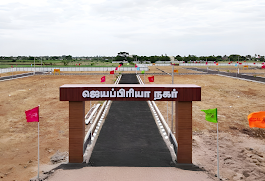The Right to Property used to be an important part of India’s Fundamental Rights. Later, it was changed to a legal status and then removed from that list. This change is still a topic of much debate in Indian constitutional history. We will look why Right to Property Was Removed and what it means today for property ownership in India.

Why Right to Property Was Removed
Article 31 of India’s Constitution gave every citizen the Right to Property. This right allowed individuals to acquire, own and sell property. However, conflicts arose for property owners. The government needed land for public welfare projects. These projects included land reform and the redistribution of agricultural lands. They also involved building dams, roads, and industries. These initiatives required access to private land for the benefit of the public.
Court interventions often mention the “Right to Property as a Fundamental Right.” This made it hard for the government to implement land reform laws. To promote social justice and fair land distribution, the government chose to limit this right. They did this by reducing some rights to property ownership.
In 1978, the 44th Amendment changed the Constitution. It removed property rights from the Fundamental Rights list. Now, property rights are legal rights under Article 300A. Citizens still own property. However, property does not receive the same protection as other Fundamental Rights, such as Equality or Freedom.
Why Was Right to Property Removed
The main reasons for removing Property from Fundamental Rights were as follows.
Land Reforms and Social Justice
After gaining independence, India wanted to end the Zamindari system. They aimed to give land to landless farmers. However, rich landowners often fought these changes in court. They claimed the reforms violated their Fundamental Right to Property.
Economic Development
India’s development plans included acquiring land for infrastructure, industries, and public welfare projects. However, the Right to Property was an obstacle. It held back important projects that society needed.
Conflict Between Individual Rights and Public Good
The government said that protecting private property as a basic right can make it difficult to achieve equality. It can also hinder social welfare for the people.
Reducing Litigation and Court Delays
Before it was removed, courts had many cases from landowners. These landowners challenged the government when it took their land. After this right was taken away, court involvement in these cases went down a lot.
Why Was Right to Property Removed from Fundamental Rights
Fundamental Rights were changed to balance private ownership and public well-being. This change allows government officials to:

Why Right to Property Was Removed – Contact Number +91-9654852919
- “Get land for important national projects without long legal fights.”
- Introduce land ceiling laws that limit how much property a person can own at one time.
- Prevent rich people or groups from misusing the right to property to challenge social welfare programs.
The government was of the belief that public good and national development trumped unfettered protection of private property rights.
Why Right to Property Was Removed from Fundamental Rights
After the 44th Constitutional Amendment Act of 1978, property was no longer a Fundamental Right. It became a legal right under Article 300A.
Key Points from this change:
- The government can take private land for public use if it offers fair compensation in return.
- Citizens can no longer challenge land acquisition in the Supreme Court under the Fundamental Rights. Now, disputes will be decided in high courts according to Article 226.
- This change helped complete welfare projects faster. These projects include housing schemes, dams, roads, and rural development initiatives.
Why Was the Right to Property Removed from Fundamental Rights
Property rights were taken out of fundamental rights to promote economic equality. This change helps the State achieve its Directive Principles of State Policy.
- Wealth Redistribution: Governments can limit land concentration. This would help distribute land more fairly to marginalised groups.
- Empowering Farmers: Land reforms helped small farmers get land that landlords once controlled.
- Reducing Inequality: This action aimed to close the gap between rich landowners and the rural poor.
India was changing towards socialism during this time. This approach focused on group development instead of personal goals. This shift showed India’s move away from individual privilege and toward shared prosperity and growth.
Impact of Removing the Right to Property
Removing Property Rights from Fundamental Rights has caused significant changes:
Ease of Land Acquisition
The government got the power to take private land for roads, railways, schools, hospitals, and industrial development.
Improved Land Reforms
The Land Ceiling Acts were put into action successfully. Excess land was redistributed to poor and landless people.
Continued Ownership Rights
Citizens still own property under Article 300A. However, they cannot depend on constitutional protection against reasonable government acquisition.
Compensation Assurance
The government can take land, but it must give fair payment to property owners.
Reduced Judicial Interference
Property acquisition disputes are now handled by regular legal procedures instead of constitutional challenges.
Current Status of Right to Property in India
Even though property rights are not seen as basic freedoms anymore, they are still protected. Article 300A of the Constitution treats them as legal rights. This provision states:
- The government cannot take property without following the proper legal steps.
- Compensation is needed when making acquisitions.
- Citizens can go to the high courts for help when their property is taken illegally.
Key Takeaways
- Property rights were first recognised as important under Article 31.
- The 44th Amendment Act of 1978 led to its extinction. This happened because of conflicts with land reform and development needs.
- Under Article 300A, these rights are now legal rights.
- Change allowed for fair land distribution and quick infrastructure development.
- Citizens still have the right to own property, but there are some limits to help the public good.

FAQ Section – Why Right to Property Was Removed
Q1. Why was the Right to Property removed from Fundamental Rights in India?
To help with land reforms and reduce inequality, the government wanted to avoid long court battles. So, the Right to Property was abolished.
Q2. When was the Right to Property removed from Fundamental Rights?
In 1978, the 44th Constitutional Amendment Act removed the Right of Property. It was moved to Article 300A as a legal right that cannot be taken away.
Q3. What is Article 300A of the Indian Constitution?
Article 300A protects citizens’ rights to own property. It allows the state to take property for public use, but only through due process.
Q4. Can the government take my property without compensation?
No. The government can only take private property for public use. They must also offer fair payment according to the law.
Q5. Is the Right to Property still available in India?
Yes. While property is no longer a Fundamental Right, citizens still have property rights under Article 300A of the Constitution. They can take cases to court for unlawful property seizures or takings.
Q6. How did removing the Right to Property benefit India?
As part of its mission, it helped with land reform. It gave agricultural land to low-income families. This reduced wealth concentration and sped up infrastructure development.
Conclusion – Why Right to Property Was Removed
The history of the Indian Constitution reached an important point in 1991. That year, property was removed from the list of Fundamental Rights. This change limited individual property rights. It aimed to promote land reform, fair resource distribution and infrastructure growth. Today, Article 300A ensures that when the government takes land for public use, it must do so fairly and legally.
Property owners should know these legal points to protect their interests when selling property or during government purchases.




Join The Discussion